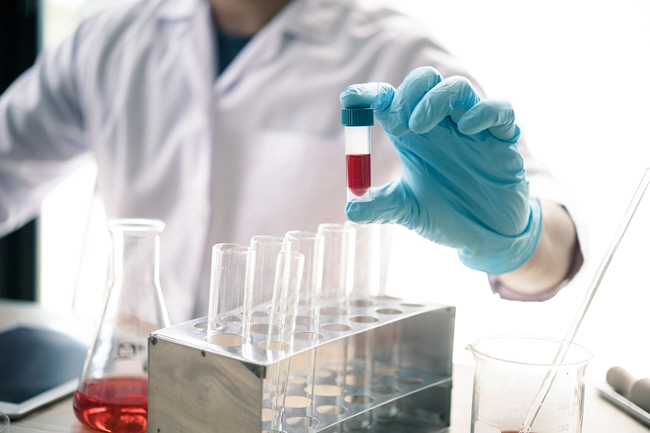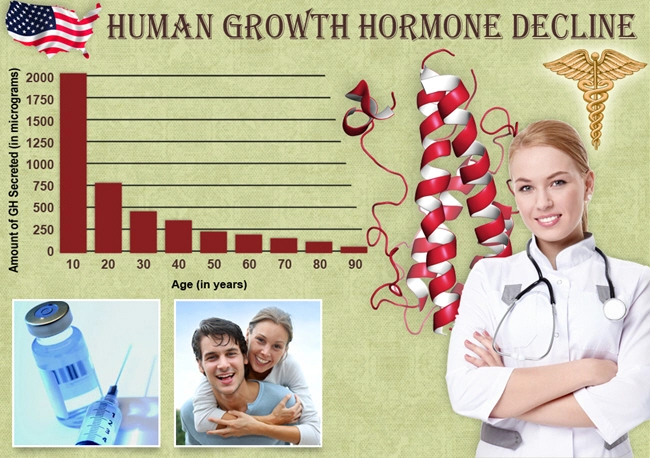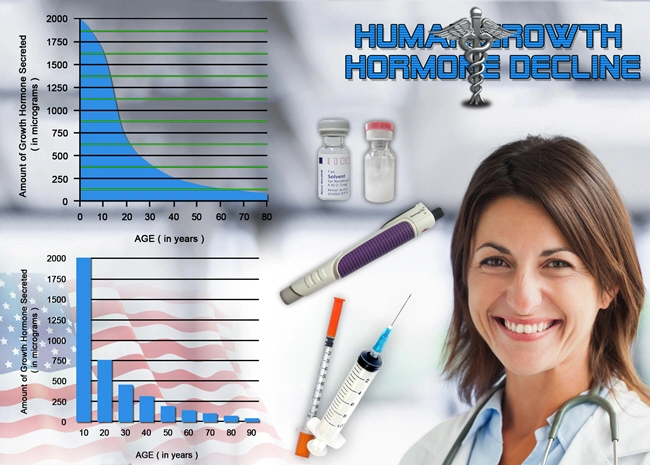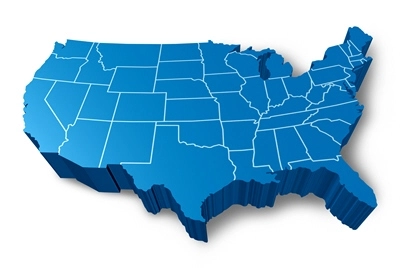
Did you know:
Sarcopenia is increasing among senior citizens at a blistering pace?
Sarcopenia is the cause of many severe health problems?
Sarcopenia can severely diminish your quality of life?
But you’re not helpless! Keep reading and discover the steps you can take to prevent this cruel and crippling affliction.
 Sarcopenia. Many people can’t define the word. But everyone knows what it looks like: A slow-moving senior citizen shuffling along, struggling to perform basic, everyday tasks like walking, lifting themselves out of a chair with tremendous exertion, painfully walking up the stairs as if they were climbing a steep hill, and battling to lift small, light objects.
Sarcopenia. Many people can’t define the word. But everyone knows what it looks like: A slow-moving senior citizen shuffling along, struggling to perform basic, everyday tasks like walking, lifting themselves out of a chair with tremendous exertion, painfully walking up the stairs as if they were climbing a steep hill, and battling to lift small, light objects.
Video Link: https://vimeo.com/294054926
Video Download: Click Here To Download Video
Video Stream: Click Here To Stream Video
Video Link: https://vimeo.com/294055083
Video Download: Click Here To Download Video
Video Stream: Click Here To Stream Video
Why? What is sarcopenia? Why does it cruelly strike seniors and send them on the road to even more severe adverse medical conditions? Why, why, why? And is there anything you can do to avoid this nightmarish condition?
Before we delve further into sarcopenia, let’s begin by defining the problem. The dictionary definition of sarcopenia is the degenerative loss of skeletal muscle mass (0.5-1% loss per year after the age of fifty), quality, and strength associated with aging.
The dictionary continues: Sarcopenia is a component of the frailty syndrome and may occur in healthy people. The term is from Greek sarx meaning “flesh” and penia “poverty.”
Typically, in your mid-thirties, your muscles start to become a bit smaller and can’t function as efficiently as when you were younger. This is especially true for folks who stay glued to their recliners.
Sarcopenia really gets in high gear for most people in their 70’s. But lifestyle is a factor. Some folks begin to see a noticeable drop in strength and function in their 60’s. But some active people stay robust into their 80’s or even beyond.
Later we will discuss the steps you can take to slow down and possibly prevent sarcopenia.
The journal Age and Aging conducted a study that concluded that sarcopenia was more widespread than previously thought.
According to Suzette Pereira, Ph.D., “Most people think that sarcopenia only impacts people in nursing homes or other long-term care facilities, but these findings show that is simply not the case. That’s why it’s important for adults and physicians to take nutrition seriously and evaluate whether people are getting the nutrients needed to maintain muscle health as they age.”
No question about it. Sarcopenia does no one any good whatsoever. From increasing your chances of early death to destroying the quality of your life, sarcopenia is a monster that must be fought tooth-and-nail.
Check Out the Grim Statistics of Sarcopenia
Here are the numbers of people who suffer from sarcopenia and the costs of this affliction. They are not pretty:
- Approximately 45% of the U.S. population suffers from some degree of sarcopenia.
- In America, it is estimated that 53% of men and 43% of women past the age of 80 have sarcopenia.

- 1 in 4 adults either doesn’t exercise much or worse, not at all.
- The financial hit to our medical system due to sarcopenia is around $900 per person annually.
- Folks who are mostly inactive may lose as much as 5% of their muscle mass per decade after they turn 30.
- An 80-year-old might have one-third less muscle mass than a young 20-year-old.
- A study estimated that the adverse effects of sarcopenia were responsible for an incredible 18.5 billion in direct medical costs for the year 2000.
The Signs of Sarcopenia
There are several indicators and symptoms of sarcopenia. Here is a list of the more common ones:
- Muscle atrophy (shrinkage of muscle size). This shrinkage occurs as a result of the loss of certain hormones (growth hormone and testosterone) and an increase in catabolic hormones (cortisol and pro-inflammatory cytokines).
- A lowering of muscle tissue quality (i.e., replacement of muscle tissue with fat tissue).
- Reduced neuromuscular junction (the synapse between a motor neuron and skeletal muscle). Left unchecked, reduced neuromuscular junction results in a gradual, step-by-step loss of muscle function and frailty.
- Changes in muscle metabolism. Sarcopenia makes it harder to gain muscle mass and easier to pack on slabs of fat.
- Oxidative stress (an imbalance between the production of free radicals and the ability of the body to counteract or detoxify their harmful effects through neutralization by antioxidants).
- Fibrosis (the thickening and scarring of connective tissue, usually as a result of injury).
- Increased falling with devastating fractures.
- Weakened bones. Sarcopenia has been referred to as “The new osteoporosis.”
- A decline in activity levels. As the muscles shrink and weaken, a person suffering from sarcopenia may fall victim to the “couch potato syndrome” and not have the desire or ability to exercise or to even get up and move. This, in turn, creates the perfect environment for sarcopenia to continue its assault, resulting in a vicious cycle.
- Increase insulin resistance which sets the table for type 2 diabetes and a horrific condition called dyslipidemia, which raises both triglycerides or plasma cholesterol, or both simultaneously.
What Causes Sarcopenia?
Researchers agree that the most significant cause of sarcopenia is inactivity. However, since the disease can strike people who stay active and are serious about their fitness, other factors may be at work.
Here is a list of the other suspects:
- A drop in hormone levels such as testosterone, human growth hormone (HGH), and insulin-like growth factor (IGF).

- A reduced ability to use protein for energy.
- A lack of appetite which results in not taking in sufficient protein and calories daily to sustain muscle tissue.
- The loss of the nerve cells responsible for sending messages from the brain to the muscles to get moving.
What You Can Do to Head Off and Block Sarcopenia
You have seen the statistics. You know the signs of sarcopenia and its causes. Frightful...gruesome...ghastly...all of these morbid descriptions apply to sarcopenia.
You know what you’re up against. And hopefully, you are ready to take some action and need to know what, if anything, you can do to protect yourself from  wasting away.
wasting away.
The good news? There are steps you can take to arrest the development of sarcopenia. And these steps are not terribly difficult to complete.
Even if these steps were extremely challenging, you would hopefully still swing into action. By now you grasp the importance of impeding the progress of this monstrous condition and possibly avoiding it altogether.
Here are some ideas for you to consider. They have been shown to be lines of defense against the development and advance of sarcopenia:
- Get off that couch and GET MOVING! Passively sitting in your recliner is a one-way ticket to a health disaster. According to Nathan K LeBrasseur, Ph.D., of the Department of Physical Medicine and Rehabilitation at Mayo Clinic at Rochester, Minn: “Without question, exercise is the most powerful intervention to address muscle loss, whether it occurs in the context of advancing age or debilitating chronic or acute diseases.”
- The type of exercise you do is crucial. Any kind of movement is better than none. But resistance training has been shown to lead the pack when it comes to sarcopenia protection. Resistance training is also known as strength training, and there is a broad range of options to consider: weight-lifting, kettlebells, resistance bands, body weight calisthenics, and even odd-objects like kegs, sandbags, and clubs can be used as training tools and allow you to have fun while training.
- Nutrition. The ancient cliché “You are what you eat” applies to virtually every issue and aspect of health – and sarcopenia is no different. Inflammation is associated with sarcopenia, and it makes sense to load up on anti-inflammatory foods like walnuts, salmon, blueberries, and leafy green vegetables. Likewise, avoiding foods that promote inflammation is a good road to go. In this category are two “super-no-no’s”: trans-fats and high-fructose corn syrup. Also, try to minimize at least your consumption of processed foods that are loaded with inflammation-promoting omega-6 fatty acids, sugars, simple, refined carbohydrates are other culprits. Eat them rarely, or, better still, cut them out entirely.
- Let’s also discuss protein. For some strange reason, many senior citizens had heard they don’t need as much protein as they did when they were younger. This is wrong, period! The reason for this misconception is that many in the over-65 group have lowered their activity levels. This may be true, but seniors still require adequate amounts of protein. The current recommended dietary intake (RDI) of protein is 0.75 g/kg for adult women and 0.84 g/kg for adult men. Another measurement is 0.8 grams of protein per kilogram of body weight or 0.36 grams per pound. However, these are arbitrary
 numbers so don’t feel obligated to follow them. Seniors should not hesitate to consume up to 1.5 grams of protein daily. For a reference, start by multiplying your body weight in pounds by 0.45 which gives you your weight in kilograms. Then multiply that number by 1.2, and that will tell you daily protein requirements. But if you are battling sarcopenia do not hesitate to up your protein intake!
numbers so don’t feel obligated to follow them. Seniors should not hesitate to consume up to 1.5 grams of protein daily. For a reference, start by multiplying your body weight in pounds by 0.45 which gives you your weight in kilograms. Then multiply that number by 1.2, and that will tell you daily protein requirements. But if you are battling sarcopenia do not hesitate to up your protein intake! - More about protein. It is every bit as critical to understanding the type of protein you are consuming as it is to grasp the need for it. Twenty different amino acids comprise protein, and they can be broken down into two categories: essential and nonessential. The difference is simple. Our bodies cannot make essential amino acids, but our bodies can create nonessential amino acids by synthesizing essential amino acids. Therefore we need always to stress the necessity of consuming critical amino acids which been in foods like fish, eggs, milk, other dairy products, poultry, and grass-fed beef. Also, consider beans and nuts.
- One more thing about protein. If you find it challenging to meet your protein needs solely through food, you might consider protein shakes. There are two primary types of protein to consider: whey and casein. Whey protein goes to work quickly and is best used immediately before and especially after a workout. Casein is a slow-acting protein and is best consumed late in the evening to keep your muscles fed overnight. When buying protein powder beware of cheap brands; they are often loaded with artificial sweeteners and other fillers that you don’t need.
- Stop smoking. This is in the “DUH” category. Simple question: is there any health condition that tobacco benefits? Of course not. Another simple question: Is there any health benefit that is enhanced by smoking? And the same answer: OF COURSE NOT! Sarcopenia occurs more often in smokers than in non-smokers. Whether this correlation is a result of bad lifestyle choices like not exercising or existing on junk food or as a direct result of the toxins and nicotine that is directly inhaled is irrelevant. If you are serious about preventing sarcopenia stopping smoking is a must.
- Consider adding supplements. Omega-3 fatty acids that are found in fish oil and flaxseed oil have been shown to boost protein metabolism in the muscles in older adults. The reason is that the omega-3 fatty acid DHA has demonstrated anti-inflammation ability, which researchers feel is valuable in controlling sarcopenia. Also, vitamin D deficiency is debilitating, especially in senior citizens. This deficiency has been linked to loss of balance, increased risk of falling, and diminished strength levels. All of these conditions can be life-threatening for elderly people. The supplement HMB (Beta-hydroxy beta-methylbutyrate) has helped some help people increase muscle mass while losing fat, but for others was ineffective. Please understand that no supplement is a magic bullet. Nutrition and exercise come first, and without them the effect of supplements is negligible. Please do your own research and if you try any of these supplements always listen to feedback from your body.
- Control your alcohol intake. This is also another “no-brainer.” Moderate alcohol consumption may, at times, be somewhat beneficial. But excess drinking leads to a series of side effects: weakened, shrinking muscles, muscle cramps, and instability in walking which could result in falling. Too much alcohol can promote inflammation and leech vital nutrients from the body. There is a definite link between alcohol and sarcopenia. If you choose to drink, choose wisely. Moderation is the key.
- Hormone Replacement Therapy. We’ve saved the best for last. Countless studies and researchers have demonstrated that one of the primary causes of sarcopenia is the precipitous drop in both growth hormone and testosterone experienced by elderly folks. Studies also have concluded that testosterone replacement therapy (TRT) and growth hormone replacement therapy have been shown to slow down the advance of sarcopenia. And this is why you need to contact our clinic. Hormone replacement is our specialty, and we can deliver cutting-edge therapy to stop and reverse this debilitating condition.
You’re not condemned to suffer from sarcopenia
 That’s correct. By now you are fully aware of the importance of stopping this tragic, devitalizing, and enfeebling affliction called sarcopenia. And the most decisive step you can take is contacting our clinic. Here’s why.
That’s correct. By now you are fully aware of the importance of stopping this tragic, devitalizing, and enfeebling affliction called sarcopenia. And the most decisive step you can take is contacting our clinic. Here’s why.
Once your vital, precious, and life-giving hormones are restored to their youthful levels, you will feel your energy exploding and your old willpower making a surprising and welcome comeback.
This, in turn, will enable you to take the other necessary steps mentioned to gain control of your life.
Recognize sarcopenia as the pitiless, relentless, and distressing disease that it is. Attack sarcopenia as if your life depends on stopping and reversing it – because it does!
References
Sarcopenia in older adults
https://www.ncbi.nlm.nih.gov/pmc/articles/PMC4066461/
Sarcopenia With Aging
https://www.webmd.com/healthy-aging/guide/sarcopenia-with-aging#1
Protect Yourself From Sarcopenia As You Age
http://www.nutritionnews.abbott/strength-muscle/sarcopenia.html
Contact Us Today For A Free Consultation
Dear Patient,
Once you have completing the above contact form, for security purposes and confirmation, please confirm your information by calling us.
Please call now: 1-800-380-5339.
Welcoming You To Our Clinic, Professor Tom Henderson.

- A Major Breakthrough in Anti-Aging Science is now Reality! [Last Updated On: October 12th, 2024] [Originally Added On: September 19th, 2020]
- All the Different Brands of Human Growth Hormone -- Guide [Last Updated On: February 10th, 2025] [Originally Added On: September 21st, 2020]
- Weight Loss Through HGH [Last Updated On: February 10th, 2025] [Originally Added On: September 24th, 2020]
- Growth Hormone and Sleep [Last Updated On: February 9th, 2025] [Originally Added On: October 8th, 2020]
- Hormone Replacement Therapy Program Protocol Diary [Last Updated On: October 11th, 2024] [Originally Added On: October 9th, 2020]
- The Curse of Non-Alcoholic Fatty Liver Disease [Last Updated On: February 6th, 2025] [Originally Added On: October 11th, 2020]
- How Can I Get More HGH (Human Growth Hormone) Naturally? [Last Updated On: July 27th, 2024] [Originally Added On: August 16th, 2021]
- Cholesterol and Growth Hormone...the Truth May Surprise You! [Last Updated On: February 5th, 2025] [Originally Added On: October 7th, 2021]
- Growth Hormone FAQ's [Last Updated On: February 4th, 2025] [Originally Added On: October 8th, 2021]
- Growth Hormone: A powerful tool to battle Erectile Dysfunction [Last Updated On: February 6th, 2025] [Originally Added On: October 8th, 2021]
- How to buy Growth Hormone [Last Updated On: February 7th, 2025] [Originally Added On: October 8th, 2021]
- Testosterone Battles Diabetes [Last Updated On: February 3rd, 2025] [Originally Added On: October 8th, 2021]
- Growth Hormone protects your Adrenal Glands [Last Updated On: February 4th, 2025] [Originally Added On: October 8th, 2021]
- Buy Growth Hormone! [Last Updated On: February 9th, 2025] [Originally Added On: October 8th, 2021]
- Growth Hormone reduces Heartburn [Last Updated On: February 5th, 2025] [Originally Added On: October 8th, 2021]
- The Link Between Diabetes and Growth Hormone [Last Updated On: February 7th, 2025] [Originally Added On: October 8th, 2021]
- Growth Hormone and Nutraceuticals [Last Updated On: February 8th, 2025] [Originally Added On: October 8th, 2021]
- Growth Hormone and Depression [Last Updated On: February 3rd, 2025] [Originally Added On: October 11th, 2021]
- Growth Hormone and the Pituitary Gland [Last Updated On: February 1st, 2025] [Originally Added On: October 11th, 2021]
- Growth Hormone and Calorie Restriction. [Last Updated On: February 2nd, 2025] [Originally Added On: October 11th, 2021]
- Growth Hormone and Healthy Living Can Add Years to Your Life! [Last Updated On: February 2nd, 2025] [Originally Added On: October 11th, 2021]
- Welcome to Growth Hormone and Testosterone Therapy [Last Updated On: December 27th, 2024] [Originally Added On: October 11th, 2021]
- Human Growth Hormone Medical Guide [Last Updated On: June 9th, 2024] [Originally Added On: October 25th, 2021]
- HGH Female Blood Panel [Last Updated On: July 9th, 2022] [Originally Added On: October 28th, 2021]









